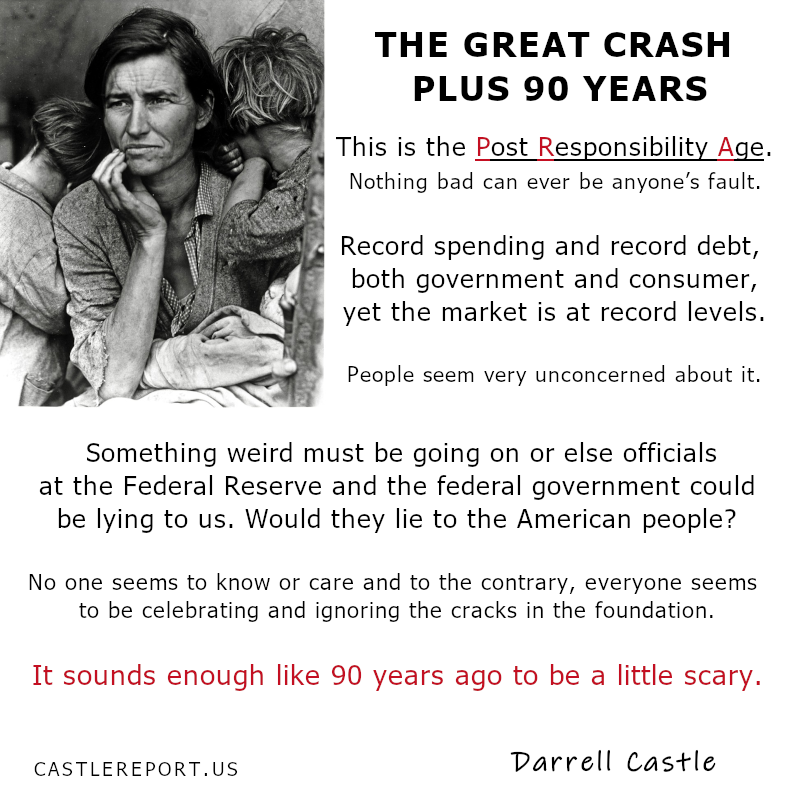
The Great Crash Plus Ninety Years
Podcast: Download
Darrell Castle discusses the Great Crash on its 90th anniversary in the hope that by examining the past we can learn something about the present and the future.
Transcription / Notes
THE GREAT CRASH PLUS NINETY YEARS
Hello, this is Darrell Castle with today’s Castle Report. Today is Friday November 1, 2019 and there are so many things we could talk about today, because so many events are happening in our current world, but instead we journey back 90 years. We look at the Great Crash on its 90th anniversary in the hope that by examining the past and its great events, we can learn something about the present and the great events of the future. Yes, it has been 90 years since the stock market crashed, sending the U.S. economy into depression. So what have we learned? That is the question for today.
In August 1929 investors in the stock market were having the time of their lives, but just two months later they were jumping to their deaths from Wall Street high rises. The stock market was indeed flying high in August 1929 fueled by the Federal Reserve’s low interest rates—easy money policies of the time. Two successive administrations, those of Harding and Coolidge were in favor of the boom and wanted to keep the roaring twenties going on into the thirties, but the Fed reversed itself and began to let the air out of the financial balloon by gradually raising rates. If all this sounds eerily familiar to you it does to me as well, and that’s why we discuss it today.
The Dow Jones Industrial Average reached an all time high on September 3, 1929 of 381.17, but there were plenty of warning signs of what was coming if one looked carefully. The Dow drifted up a little and down a little over the next six weeks until finally in the last week of October it crashed with one massive sell off after another. Ordinary investors joined the professionals and sold what they could of their portfolios, but many lost everything they had worked all their lives to accumulate. The market did not reach bottom until July of 1932 when it hit a low of 41 representing just 11 per cent of its high.
Today the market stands at 27,071.42, a massive difference even considering inflation, but it did not fully recover its pre-crash level until 1952, so it took a world war plus about a quarter of a century to regain the level it reached in August 1929. The Great Crash was precipitated by, and exacerbated by, a series of government blunders that continued to make a bad situation a lot worse. The Fed shifted rates up and down, taxes were increased, prices were fixed, gold was seized, and many other mistakes. Since the prices received by farmers for their products had also cratered, the government assumed that prices fell because of oversupply, so the government supervised the destruction of agricultural products, including thousands of animals.
This government intervention was perhaps all with good intention, but it had the effect of stifling investment and boosting unemployment so the situation for the average American went from bad to worse. In the first four years that being 1929 to 1933 the production of factories and mines fell by more than one half. Real disposable income fell 28 percent and stock prices collapsed to one tenth their previous value. Unemployment went from 1.6 million to 12.8 million in 1933, which meant that one in every four people had no job.
It was not just the United States that was affected because the entire world economy was on the brink and collapsing. It brought about the rise of strong men in many nations who promised they could fix the problem. There are many theories about what caused the Great Crash and what made it get progressively worse. Many of those theories should probably be labeled myths, but for our purposes we are not here to debate the cause but to examine where we stand today, 90 years post crash.
Today our economic system is under attack and is being blamed for all sorts of problems. Our progressive friends see problems that I believe are caused by too much intervention but they think more intervention is the answer. Sometimes these folks fail to realize that capitalism is an economic system not a political one. Capitalism, or a true free market, gives you what you deserve, not what you want. In a true free market those who are highly skilled and who work the hardest get paid the most. Those who are less skilled and who work less get paid less. Those who can’t, or won’t, work don’t get paid anything at all, but in our current system, the government taxes and transfers in an effort to level the inequality.
Now here we are 90 years later headed down a road that Hayek called “The Road to Serfdom.” For example, last year U.S. households received 2.2 trillion in government payouts while those same households paid only 1.7 trillion in income taxes.
We don’t have to speculate on this stuff because we have it straight from the Office of Management and Budget or (OMB). Federal transfer spending is expected to hit a record $3.22 trillion this fiscal year. Those payments will account for 68 percent of all federal spending. As well as 14.4 percent of all GDP.. Going back to the Great Crash for a moment, in 1940, even with FDR’s New Deal, only 2.1 percent of GDP was devoted to such payments.
These statistics are mind numbing, I know, but they don’t exist in a vacuum. The numbers indicate that something is wrong and that is reflected in other numbers up and down the line. They aren’t just numbers though; they represent real people and real families. We have traveled an interesting road since the Great Crash, this Road to Serfdom. How did we evolve to this point where the Federal Government has such a dominant controlling position in our lives? How did we reach the point where so many depend on the government just to live? How can we expect to continue transferring more than is collected?
For example: 50% of all Americans receive at least one federal benefit. Sixty three million receive Social Security payments; sixty million receive Medicare and Medicaid, seventy-five million. Five million households receive federal housing subsidies, and Forty million Americans receive food stamps. Are there really forty million of us who can’t feed ourselves?
Only during the worst years of the Great Crash, 1931 to 1936 did government income support exceed taxes paid as they do now and the level is far higher now. If we look at the growth figures for the Crash years 1929 to 1940 we will find that GDP expanded by cumulative 19.89 percent, and that exceeds our last 11 years growth by one percent or so. That means that growth wise it’s worse now but of course the foreign trade sparked by the war in Europe had a lot to do with it.
The growth figures are even more obvious with Crash years growth averaging double figures while none of our past 11 years exceeded 3 percent growth. Those growth figures represent people working and people building things that are being sold to others. So, in summary of these last few mind numbing statistics, today we draw more from the Federal Government than in the crash years, but far fewer paying taxes actually supports it. What’s the secret that we have now and we didn’t have then. What keeps all the plates in the air now, what keeps the house of cards standing now; in a word debt; $22 trillion of it plus at least 100 trillion of unfunded liabilities and many say it’s twice that high. If we Americans require such record federal assistance during a period of expansion and growth, and carry such debt loads during good times, what will happen when recession hits.
The only answer is for the government and the Fed to open the spigot of spending and since the tax money is not there it will have to be in the form of debt, which will result in huge deficits such as the already almost one trillion dollar deficit of this fiscal year. So the government proposes to spend one trillion more than it takes in this year but still we put up with it because we haven’t felt it yet.
The Congressional Budget Office (CBO), which usually under predicts, tells us to expect a twenty eight trillion plus debt by 2029. That should be 93 percent of GDP, but if you are not so rosy and you factor in recession with two to three trillion dollar deficits you can see the debt could run to twice that figure. How will this debt ever be paid? It won’t, not a penny will ever be paid. In 2018 the interest payment was $523 billion, a record, and it’s under a supposedly conservative administration. CBO predicts debt service will rise to $915 billion by 2028 which would be nearly 25% of the entire budget. Interest payments in the recession factored debt prediction would swamp the entire budget.
What does all this say about us the American people? Does it say that we have gotten what we wanted and what we deserve or does it say that we have been fooled and cheated? One thing that screams out at us is that as Alexander Green says this is the “Post-Responsibility” society. We could all use a dose of personal responsibility for our own conditions. We are always quick to blame the system, the Fed, the bankers, income inequality, etc., for our condition; blame anyone but us because whatever it is, it just can’t be our fault.
Almost 40% of Americans say they do not have enough money to cover a $400 emergency. I see them in my office every day; I see those who have decided to make up the shortfall between income and lifestyle through credit. All emergencies can also be covered through credit until one day they can’t. Politicians running for office encourage irresponsibility by constantly telling us, it’s not your fault and the government should pick up the tab.
Even the United Nations is down with the cause. U.N. Secretary General Antonio Guterres warned recently that the global economic outlook is facing severe headwinds, and the international community must quickly act to “do everything possible” to prevent the world from fracturing, mostly due to the US and China trade war. He spoke last week at the World Bank and IMF annual meetings in Washington D.C. He said he fears a “great fracturing” of the world in two by the two great superpowers.
He told all the world’s bankers that “it is not too late to avoid” this fracturing of the world but we must have a universal economy, with universal respect for international law; a multi-polar world with strong multi-polar institutions, such as the World Bank and IMF. Yes, well that all sounds so familiar from the U.N., but at least he is open about it. Let’s break his statement down a little into what it really means. The U.N. wants a world government with the U.N. at the head and all financed by the U.N’.s favorite banks—the World Bank and the IMF, all with a world currency issued by them.
I have a feeling we are just about at the point of welcoming the Secretary’s ideas into fruition. Back in 2008, when I was a candidate for Vice President, I traveled around the country explaining “as best I could” the bailout that was in progress and the TARP fund for Federal government economic intervention. Everyone was screaming “End the Fed” because everyone was against the bailout. I spoke at different End the Fed rallies, including two different ones outside the Federal Reserve Bank of Kansas City.
Trillions of dollars of borrowed money created by the Fed were injected into the economy, especially to failing banks. People saw the scam for what it was, i.e., you play the casino game, and if you win then you keep it, but if you lose we will eat the loss. That’s a pretty fool proof game if you can get it, but the public’s revulsion at what the banks, especially the Fed, did inspired them to never let it happen again.
The Fed understood our disgust therefore now they don’t tell us, they just do it. The Fed poured $750 billion dollars into its lending operation in the past month. That’s three quarters of a trillion dollars in one month and no one is screaming “End The Fed”. In fact, we can’t even convince anyone to audit the Fed. Why should they ever tell us what they’ve done with our money? No bankers should ever pay for their risky behavior and mismanagement, that falls on us. During the time of the Great Crash, the reward for such behavior was bankruptcy, and that is the reward they should get today as well.
Finally folks, this is indeed the post responsibility age. Nothing bad can ever be anyone’s fault. The result, however, is rising consumer debt which is now at more than $4 trillion and the holiday shopping season is right around the corner. Christmas is expected to add a record $143.7 billion to the total. Record spending, record debt, both government and consumer, and yet the market at record levels, and people seem very unconcerned about it. The Fed just added fuel to the fire by lowering the bank lending rate to 1.5 to 1.75%. Why would that be necessary with unemployment at all time lows? Something weird must be going on or else officials at the Fed and the federal government could be lying to us. Would they lie to the American people? No one seems to know or care and to the contrary, everyone seems to be celebrating and ignoring the cracks in the foundation. It sounds enough like 90 years ago to be a little scary.
At least that’s the way I see it,
Until next time folks,
This is Darrell Castle,
Thanks for listening.
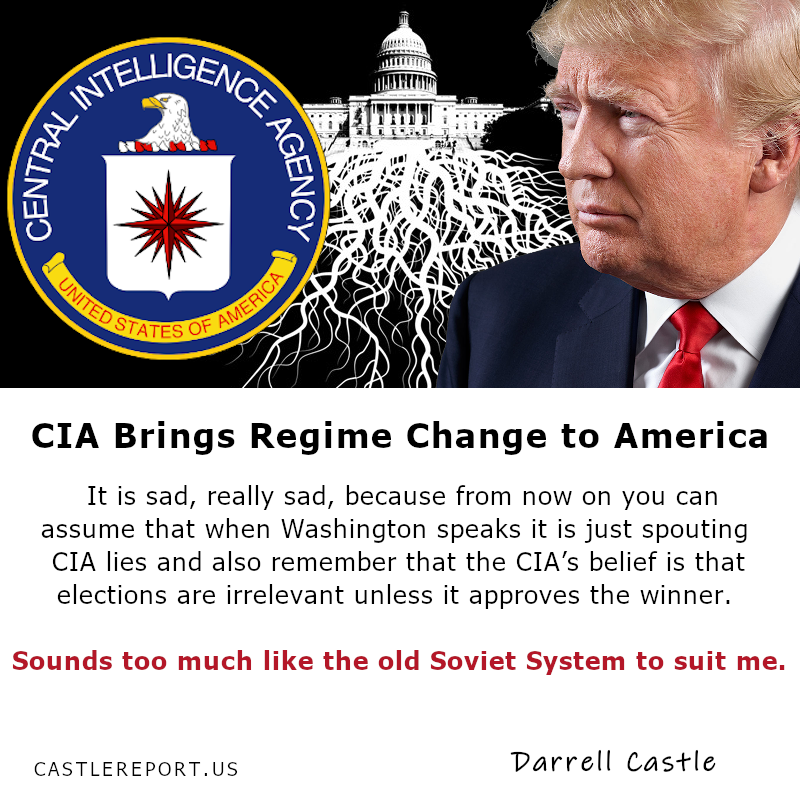
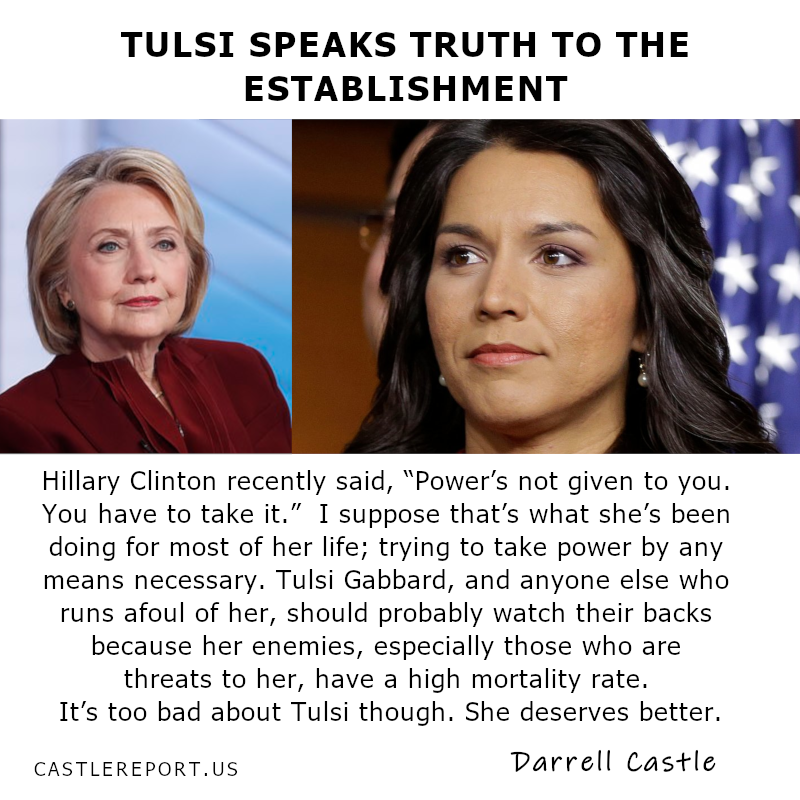

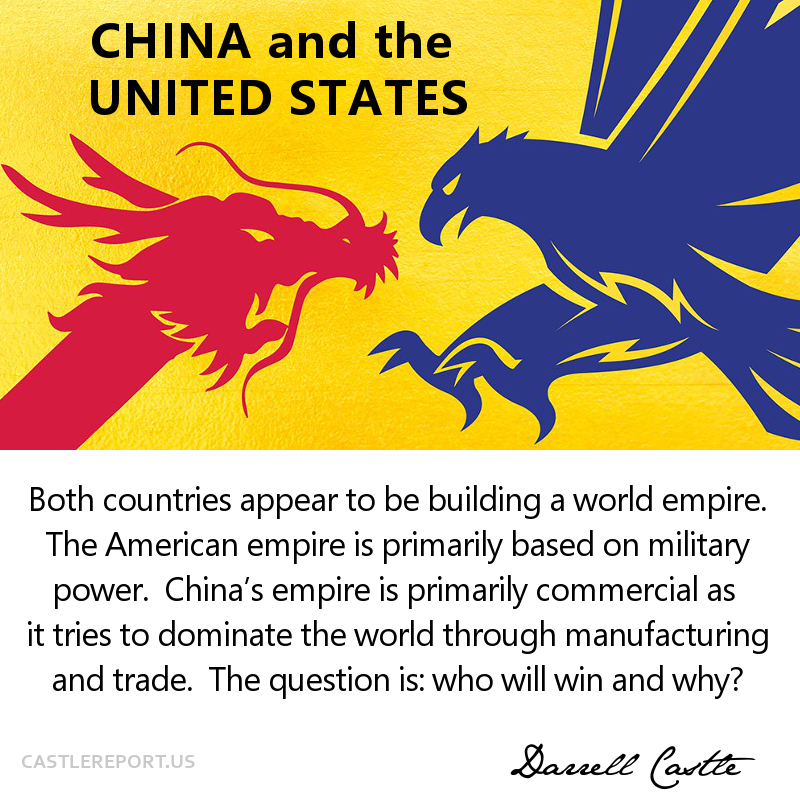
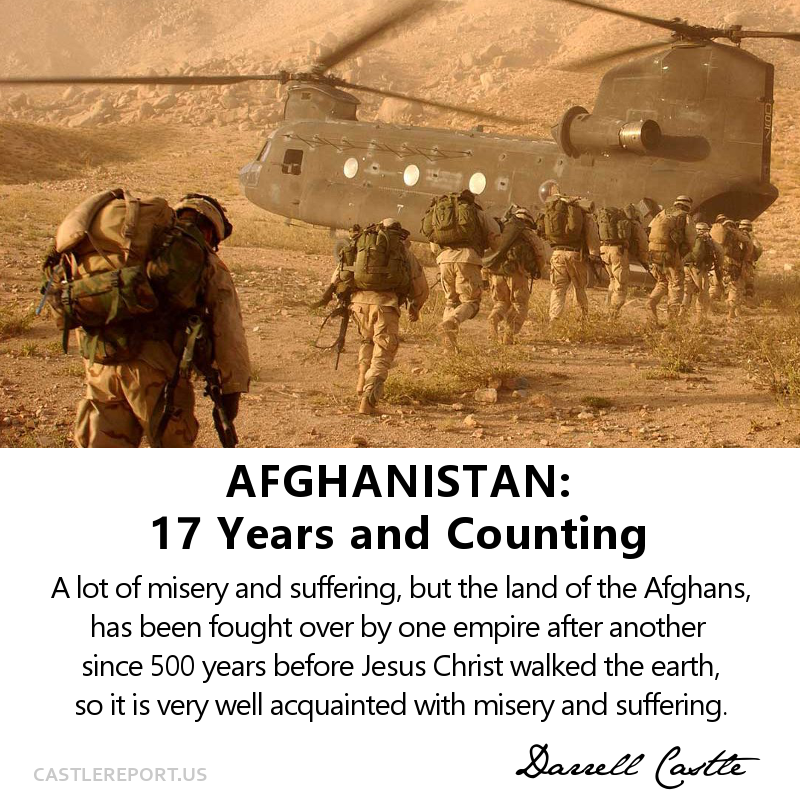
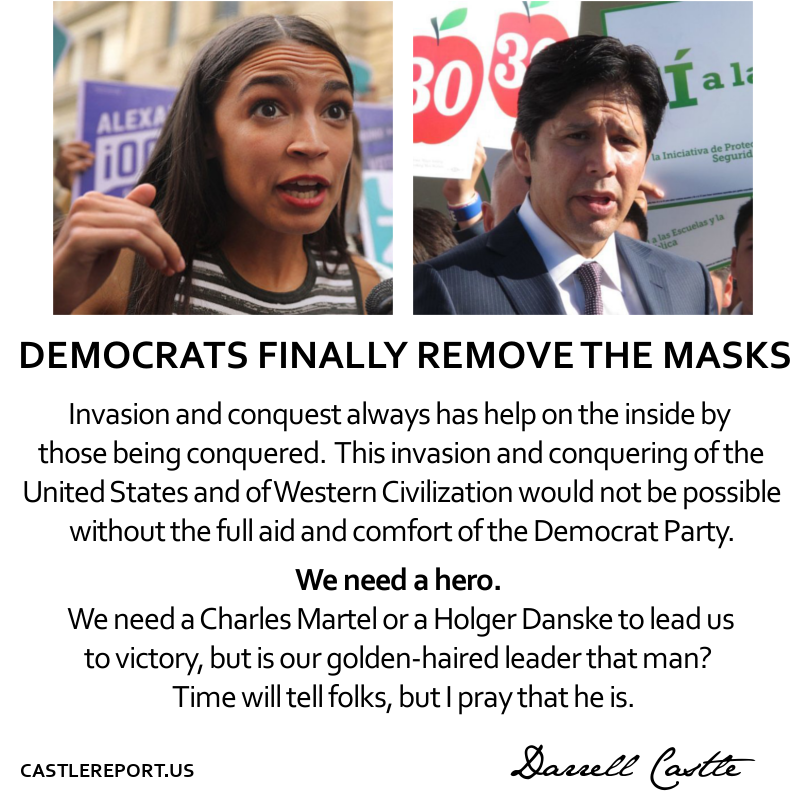
2 Comments
Mike Lohin
I commend you for your unapologetic diligence in questioning the wisdom of our federal (and international?) funding mechanisms, entitlements and debt levels in light of recent history. However, unless and until pain and consequence are actually felt to any degree, I believe the “lords of growth” will continue to hold course, especially aside a populist executive preferring and fomenting domestic employment and productivity. Case in point, he wisely is actively maneuvering to reduce active military conflict but yet overall spending does not decline. I understand economic effects, conditions and phenomenon are cyclical but we now have a long standing, ominous trend established as you pointed out. Regarding the prolific domestic assistance, grants, subsidies and personal/public debt, I contend that the inflation inherent in this scheme (combined with federal mandates and associated sundry costs) would otherwise have exposed such a true lower standard of living for many families, businesses, local jurisdictions and volunteer first responders alike that political, social and economic upheaval would be inevitable, personal accountability notwithstanding. I hope to be proven wrong and that there’s a soft transition to old school accounting but history has not been so forgiving. Thanks for keeping on this sir.
JONATHAN TAUB
it seems you are saying the best thing for the average american is to get away from privately printed money and go to a TRULY federal reserve that is owned and printed by the government….I can think of a few people who wanted to get away from the privately held dollar…..lincoln and kennedy proposed going to goverment printed money…kadaffi proposed going to gold standard….and i believe saddam hussein also wanted toget away from petrol dollar…they all ended up being murdered….could be a coincidence but i doubt it….just like I doubt its a coincidence we support a muderous regime like saudia arabia when most of the 9-11 hijackers were saudis and they just happen to support the u.s. petrol dollar…at least for now…..its a horrible reality ….if our dollars were not printed by a private bank…how would that change things?…i am asking because i really do not understand the money system all that well
perhaps you could do a piece on how things would change if the u.s. decided to print money that did not belong to any private institutions….i hear a lot of people saying “get off the federal reserve!” but they never explain the process and how things would change i would be inteested in hearing that